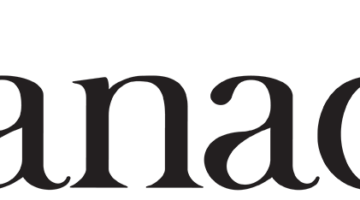At demo days, work-flow improvements often can’t compete with warmer, fuzzier, cooler topics like children’s health or apps for helping caregivers. However, it was the process improvement team that had the clearest path to market at last week’s Innov8 For Health Demo Day in Cincinnati.
eProvision makes it easier to give — and revoke — access to medical records. Phil and Emily Stinson, owners of Intec Solutions, joined Dr. Daniel Funk to launch Satec Healthcare Solutions. The new company will commercialize solutions the Stinsons found in their original consulting company.
CEO Phil Stinson described eProvision as an automated work-flow engine that fills the gap between HR and IT. When a person is hired, human resources sends an email to the IT department requesting access for the appropriate systems. This request can be routed to multiple people, depending on what systems require what approval for access.

With the Rise of AI, What IP Disputes in Healthcare Are Likely to Emerge?
Munck Wilson Mandala Partner Greg Howison shared his perspective on some of the legal ramifications around AI, IP, connected devices and the data they generate, in response to emailed questions.
“Right now, this is a paper system in many places and it can take anywhere from three to seven days for a new hire to get access,” Stinson said. “We were working with a new IT guy once and it took him three days to get access.”
The Stinsons created eProvision — initially known as SARS, System Access Request Service — when working with St. Elizabeth Healthcare in its three hospitals in the metro Cincinnati area.
“St. Elizabeth has been using it for three years and the auditors like it,” Phil said.
The system can generate an audit trail of all the users that shows who was granted access when and by whom. This reporting capability seems to be as important as the user-management work flow itself.
“Our direct competition is an in-house or paper-driven solution,” he said. “There are some similar products in the identity management area and the security space.”
Satec principal Emily Stinson described the current state of data security by pointing to the HHS.gov listing of data breaches. The HITECH Act requires healthcare organizations to report breaches of unsecured protected health information affecting 500 or more individuals. The fines range from $750,000 to $31 million, Emily said.
“Remember that this is at only 50 percent adoption rate of EHRs,” she said.
The current HHS data set shows that 61 percent of health information breaches happened via a computer, laptop, server or other portable device. Twenty-three percent were via paper records. Theft was the biggest source of the lost data at 49 percent, but unauthorized access was the next biggest source at 19 percent.
The revenue model is designed around a site license with a 20 percent annual maintenance fee for larger hospitals and a cloud-based solution for smaller hospitals with a subscription license based on the number of users. He said the current potential market is $310 million and that the company is talking with a partner who could distribute the software nationwide. The company is looking for an investment of $250,000 and predicts it will be cash flow positive by mid-2013.
The other company that stood out at the Demo Day was MedaCheck.
Jeff Shepard and Dawn Sheanshang worked with an industrial design student to create a virtual pillbox. The idea is that pharmacies and hospitals could load the pillbox with a patient’s medication information — a picture, a dose, and a description of the pill — when a patient gets a new medication or is discharged. The patient could use a computer or smartphone to check what medication to take when and click each box to show that the pill has been taken.
The system also includes reminders for the patient and reports for family members and care providers.
Shepard is a serial entrepreneur and Sheanshang has worked in pharmaceutical sales.
Other companies that graduated from the accelerator included:
BetterPointment: The combination of a patient app and a doctor app allows better information sharing before a doctor visit.
CaringTies: This website makes it easier for caregivers to track information about a family member and share the information throughout the family.
IFG Health: This collection of apps employs user-generated content to help people manage their healthcare experience.
Minerva Health Learning Systems: This iPad game is designed to teach children with type 1 diabetes how to care for themselves.
MyFearZapper: This online game teaches children to overcome fears using techniques from cognitive behavioral therapy.














